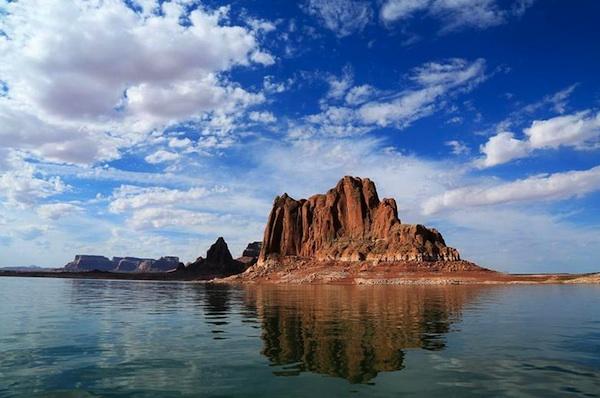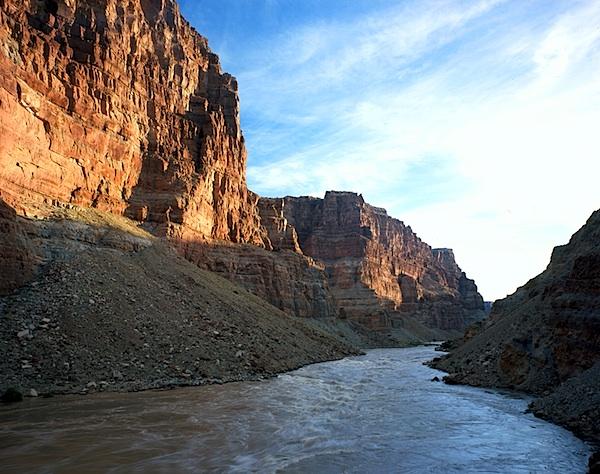
Glassy Lake Powell./Bob Moffitt via NPS
I gave my heart to the mountains the minute I stood beside this river with its spray in my face and watched it thunder into foam, smooth to green glass over sunken rocks, shatter to foam again. I was fascinated by how it sped by and yet was always there; its roar shook both the earth and me. ' Wallace Stegner
Rivers run fast and tumbling throughout the National Park System, there are streams with lazy meanders, and placid lakes perfect for dipping a paddle. This diversity poses a delightful dilemma when you have the urge to float and paddle. What follows is just a sampling of the experiences that await you, whether you have hundreds of watery miles under your paddle, or are looking for calm waters to take your youngsters. Where available, links take you to paddling information specific to the park unit.
Southwest Parks
Glen Canyon National Recreation Area, Utah
Paddling information: http://www.nps.gov/glca/planyourvisit/kayaking.htm
Glen Canyon attracts a large amount of houseboat traffic, but experienced paddlers can find some incredible solitude in the backwaters and side canyons of Lake Powell.
The NRA's staff divides the paddling possibilities into two categories: downlake paddles and uplake paddles. Tackle the Escalante Arm of the reservoir, which is about 35 miles downstream of Halls Crossing Marina, and you'll find a number of side canyons worthy of exploration both in your sea kayak and day hikes. More than a few alcoves, hanging gardens, and panels of rock art can be found in the area.
With the drought of recent years, the reservoir's levels have dropped significantly, in some cases opening up side canyons long underwater. The Cathedral in the Desert, a temple of Navajo sandstone once inundated by the rising reservoir, is one such treasure the dropping waters have revealed.

Big Drop Rapid, Cataract Canyon, Canyonlands National Park/NPS
There are no camping fees assessed or required permits at the NRA, but if you are camping in the backcountry you must carry an approved human waste containment system, such as a portable toilet or enzyme-based waste bag system.
Canyonlands National Park, Utah
Paddling information: http://www.nps.gov/cany/planyourvisit/boating.htm
While most of this desert park is dry, parched, and arid, it has its wet side. And what a wet side that is. When people speak of floating the Colorado River, and are not referring to the section that flows through Grand Canyon National Park, they're likely talking about Cataract Canyon.
Cataract is one of the classic white-water river trips in the Southwest with the tawny sandstone walls rising high overhead.
But it's not for sissies, as the folks at Canyonlands like to point out: "Cataract Canyon contains 14 miles of rapids ranging in difficulty up to Class V. It is a particularly hazardous and isolated section of the Colorado River and is subject to extreme water level fluctuations."
Next Wednesday: Alaskan Parks

 Support Essential Coverage of Essential Places
Support Essential Coverage of Essential Places







Add comment